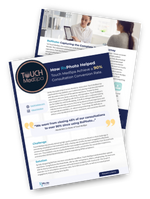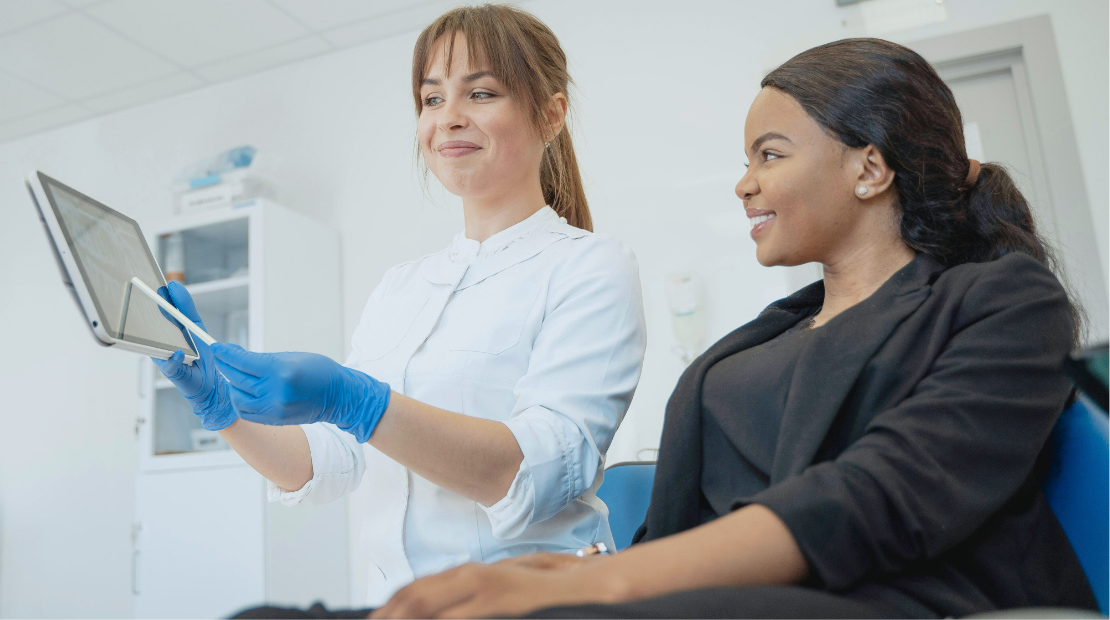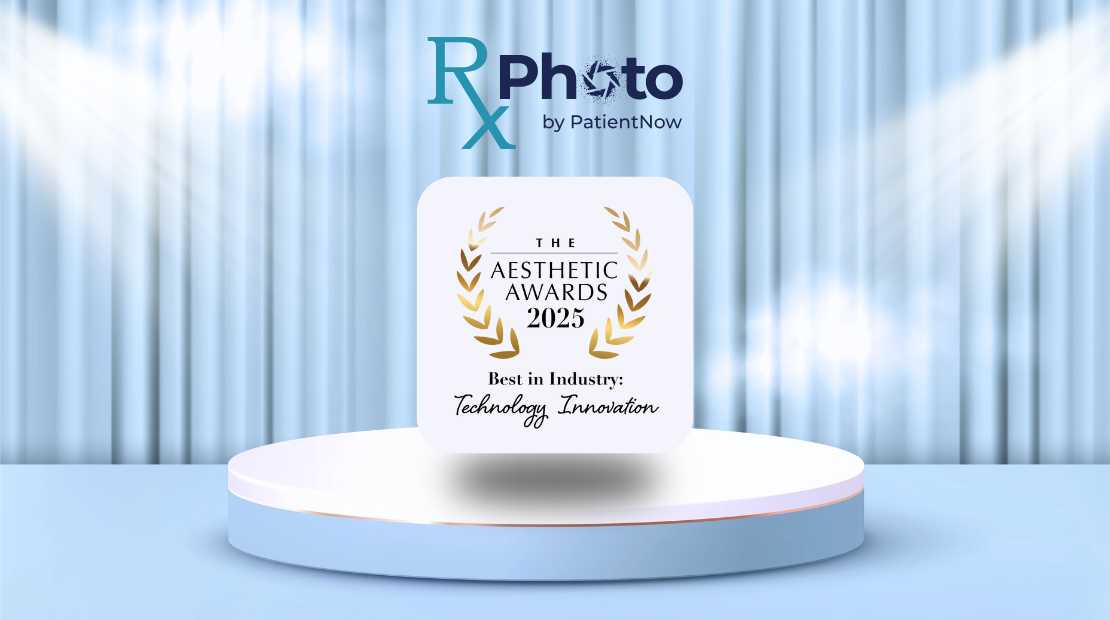Table of Contents
In an aesthetic practice, consultations are more than a formality. They are one of your most valuable opportunities to turn interest into action. Every patient who books a consultation is expressing curiosity and trust. What you do in that moment determines whether they move forward with treatment or walk away uncertain.
If you want to increase your consultation conversion rate, the answer is not a harder sell. It is a better experience. One that informs, builds trust, and helps patients confidently choose the next step. The most successful practices focus on creating a structured, visually engaging consultation that guides the patient toward a clear decision.
Here is how to build that kind of consultation process.
1. Build a Clear and Consistent Consultation Framework
Patients appreciate clarity and professionalism. That starts with having a predictable, organized consultation process. High-performing aesthetic practices use a reliable flow that allows for personalization without sacrificing structure.
A proven consultation format often includes:
- A warm welcome that sets the tone
- Questions that uncover both aesthetic goals and emotional motivators
- A clinical assessment that includes photography
- Visual examples that demonstrate treatment options
- A personalized treatment plan
- Clear guidance on next steps, including booking and prep
This kind of structure helps providers stay on track while giving patients a sense of control and clarity. It removes confusion and builds trust, which are both essential for higher conversion rates.
2. Use High-Quality Before and After Photos
Words alone cannot fully explain what a treatment can achieve. Patients want to see what is possible, and before and after photos are one of the most effective ways to show them.
These images are not just for your website or social media. When used inside the consultation, they help patients understand potential results in a way that feels real and relatable.
To use photos effectively:
- Capture them under consistent lighting, angles, and backgrounds
- Organize them by treatment type, skin tone, or age group
- Show outcomes on people with similar goals to the patient
- Present them in a format that allows clear side-by-side viewing
When patients see transformations that mirror their own goals, it often provides the clarity and confidence needed to move forward.
3. Make Visual Tools Part of the Consultation
Some practices take visual education further by using tools that help patients interact with results. This includes image sliders, side-by-side comparisons, and overlay features that show gradual improvement.
These tools help patients:
- Understand how specific treatments affect appearance
- Set realistic expectations
- Feel more confident in their decision
When used consistently, visual tools reduce misunderstandings and hesitation. They also help make the consultation feel more professional and patient-centered.

Want to Double Your Consult Conversion Rate?
See how Touch MedSpa took their consult conversion rate from 45-90% with RxPhoto!
4. Let Patients Explore Images Before the Consult Starts
One effective strategy is to let patients view before and after photos on their own before the provider enters the room. This can be done with a tablet or kiosk placed in the waiting area or consultation space.
Letting patients explore images ahead of time:
- Encourages self-education
- Reduces the need for long explanations
- Helps patients come into the consult with more focused questions
This approach saves providers time and helps patients feel more in control of the conversation. It also sets the stage for a deeper, more productive dialogue.
5. Train Your Team to Deliver a Consistent Experience
High conversion rates are not achieved by one provider working alone. They happen when the entire team is trained and equipped to support the consultation process.
To make that possible:
- Create written documentation for how consultations should be run
- Train staff on how to use photo tools and communicate results
- Use digital tools that support photo consistency and secure storage
- Give front-desk and support staff a clear role in preparing patients
When everyone on the team knows what to do and how to do it, patients receive a seamless experience. That consistency builds confidence and trust, which increases conversion.
6. Address the Emotional Side of Decision-Making
Most aesthetic decisions are driven by emotion, even when they sound clinical. Patients may ask for filler or a laser treatment, but underneath that request is usually a desire to feel more confident, more youthful, or more like themselves.
Effective consultations focus on the emotional “why” behind the treatment.
- Ask questions about what the patient hopes to feel after treatment
- Reflect their goals back in your language
- Use visuals that connect to their aspirations
- Avoid clinical jargon and focus on outcomes that matter to them
When patients feel understood on both a technical and emotional level, they are more likely to trust your recommendation and move forward.
7. Build in a Strong Follow-Up Process
Not every patient will say yes during the consultation. That is why follow-up matters. Practices with strong follow-up strategies often recover a significant percentage of undecided patients.
To improve your follow-up:
- Send a consultation summary with a personalized message
- Include a secure link to their photos and treatment plan
- Set reminders for friendly follow-ups 24 to 48 hours later
- Use automation to help your team stay consistent without added workload
Follow-up should feel supportive, not pushy. When patients are given space and information, many come back ready to commit.
8. Remove Barriers That Prevent Patients From Booking
Even when a patient wants to move forward, a complicated or unclear process can cause hesitation. To increase conversion, make booking and payment as easy as possible.
Checklist for reducing friction:
- Share pricing and package details during the consultation
- Allow patients to book their appointment on the spot
- Provide financing or payment plan options
- Use digital tools to streamline consent forms and prep instructions
Patients are far more likely to follow through when the path is simple, quick, and clearly laid out.
Conclusion: A Real-Life Example of What Works
Touch MedSpa made all of these improvements part of their consultation process. They introduced standardized photo capture, implemented interactive visual tools, empowered staff through training, and gave patients self-guided photo review options. As a result, they improved their consultation conversion rate from around 45 percent to over 90 percent!
Their transformation was powered by RxPhoto, a visual consultation platform built for aesthetic practices. RxPhoto helps providers capture consistent before and after photos, organize visual libraries, and educate patients with tools like the Slider, Side-by-Side Comparison, and Ghosting.
At Touch MedSpa, RxPhoto became the foundation of a consultation process that felt more trustworthy, engaging, and patient-focused. And that led to real, measurable results.
If you want to improve your consultation conversions, start with your process. Then bring in tools like RxPhoto to help you deliver the kind of visual clarity, consistency, and confidence that turn consultations into booked treatments.plore what better visuals can do for your results, your efficiency, and your patient relationships.


